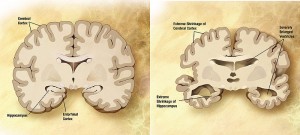
Image of Mercury from previous Messenger missions. From NASA.
After years of planning and development, NASA’s space probe Messenger finally fell into Mercury’s orbit Thursday evening. At 9:10 p.m. of March 17, when the last rocket that projected Messenger shut off and the probe fell into Mercury’s gravity pull, scientists at the control room in John Hopkin’s University started in a round of applause.
Mercury is the fifth planet that NASA spacecrafts have orbited. Mercury is the closest planet to the sun and lacks an atmosphere. This means that Mercury’s surface is super heated by the sun during daytime but drops to hundreds of degrees below freezing at night. Also, without an atmosphere, Mercury’s surface is heavily cratered. The vast temperature different implies that ice could be found inside the craters. The Mercury probe hopes to bring back a year of photography that would help in the research of the creation of Mercury and its composition. With this goal in mind, surveillance of the probe is needed for the next few days. Constant checks on the probe’s health systems, testing of the scientific equipment that is on board is essentially so that the vast amount of data can be collected and transmitted back to Earth.
This massive project started in 2004 with a budget of $446 million. Hopefully, the probe will bring back valuable data that would useful for planetary scientists to determine the evolution of Mercury.
Messenger also hits close to UBC as one of the Earth and Ocean Science professors, Dr. Catherine Johnson, participated in the project. Dr. Johnson is a participating scientist in the project and hopes to discover the reasons behind Mercury’s magnetic field. The probe Messenger hopefully will gather data that will be of use to Dr. Johnson.






